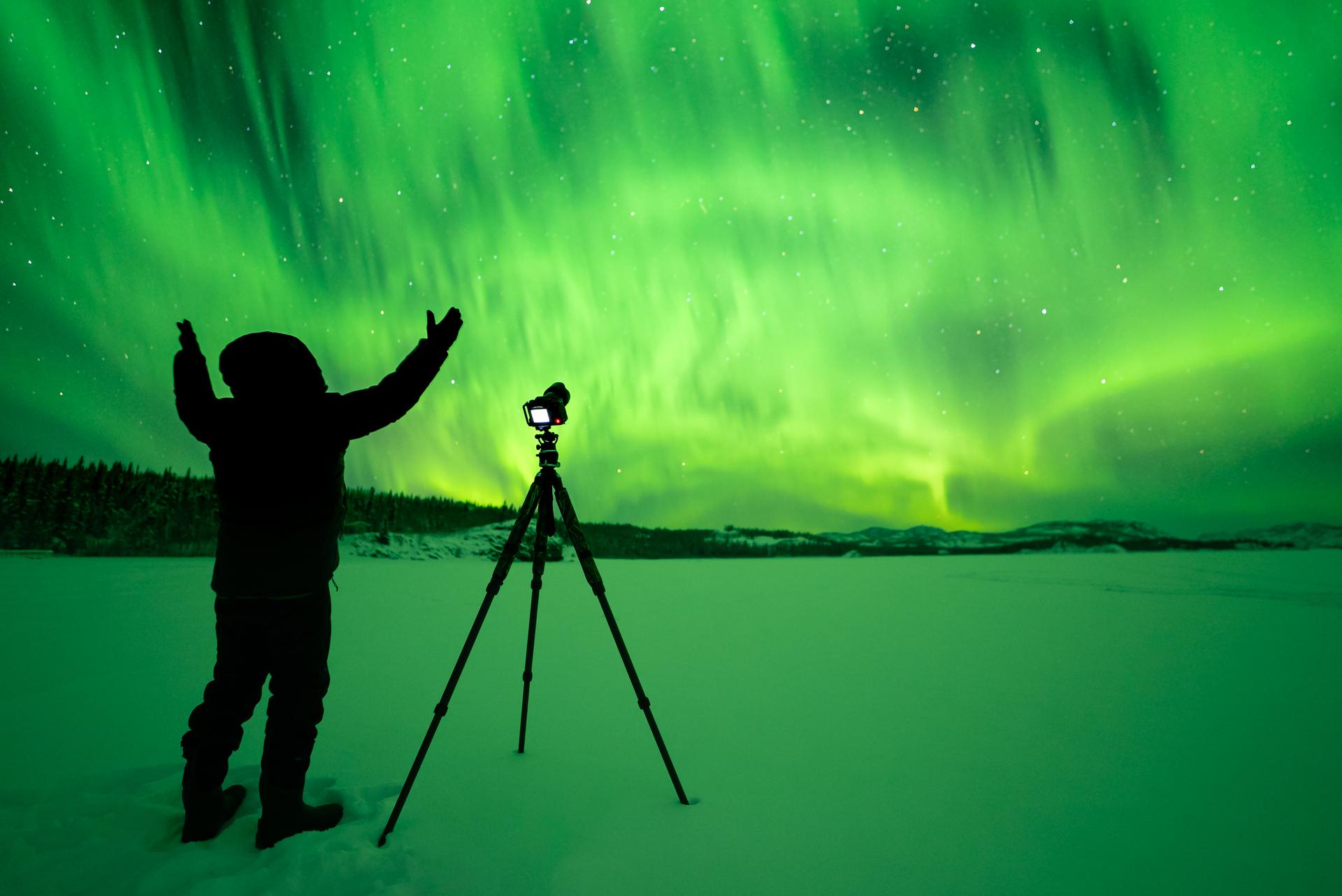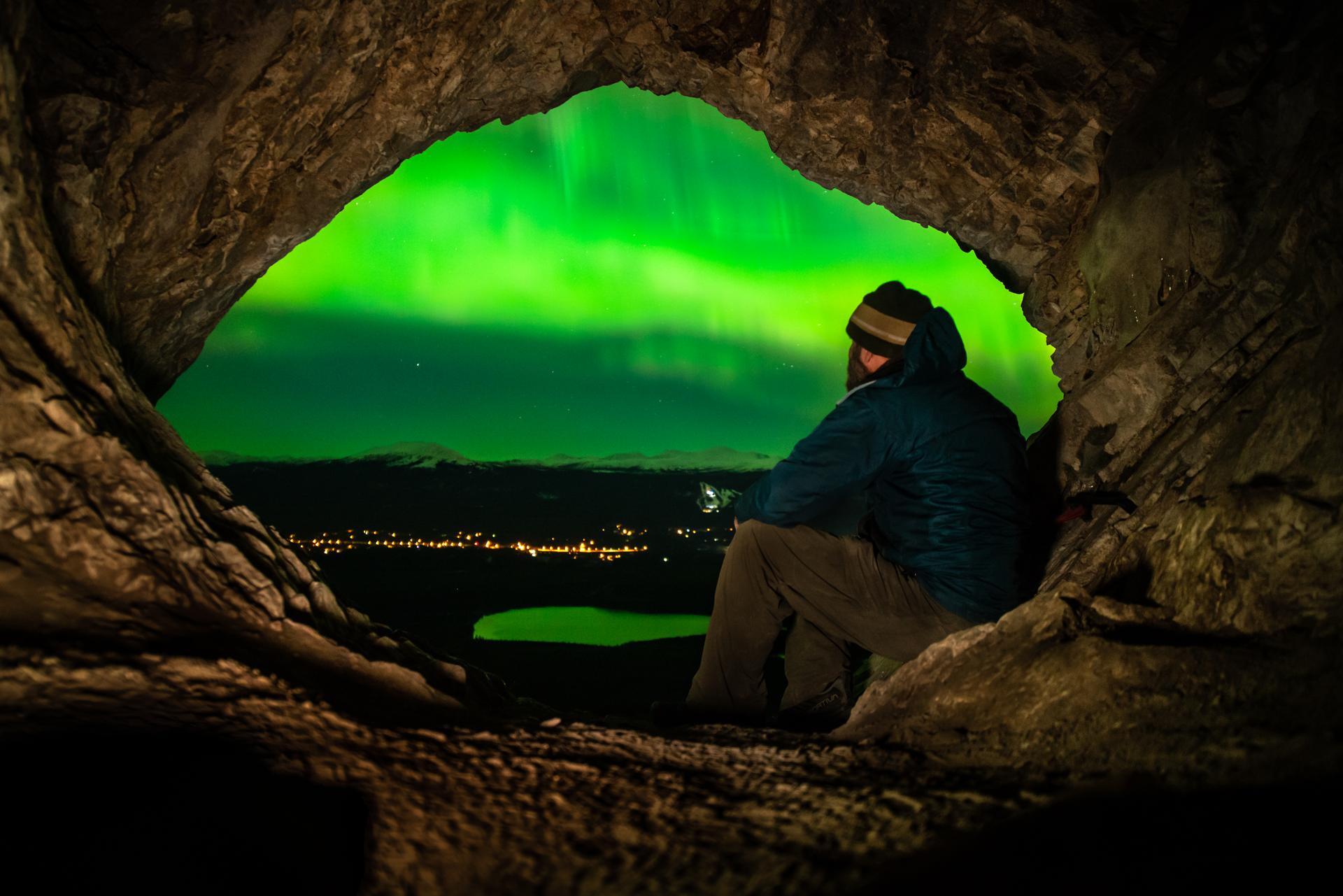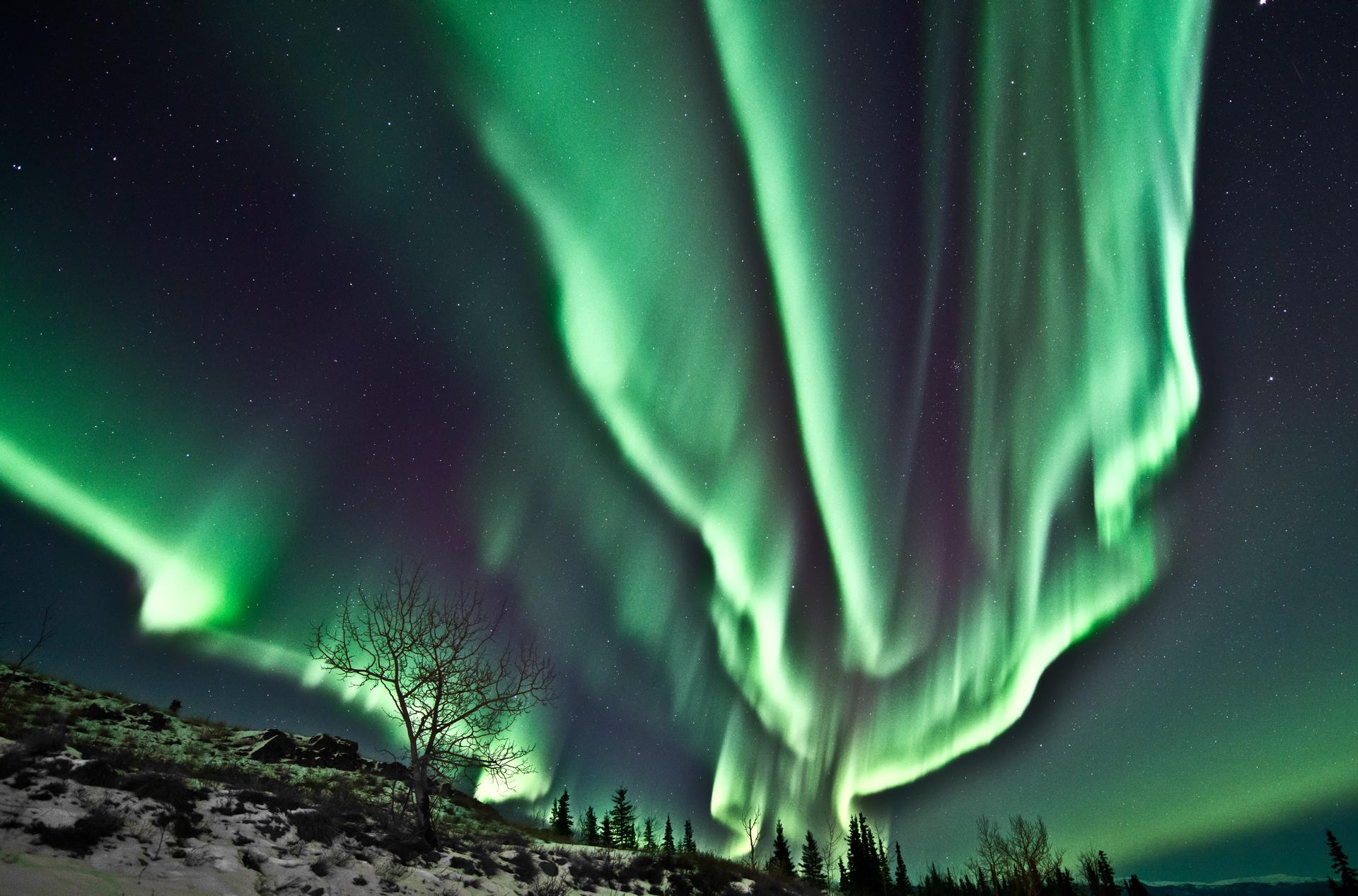Why the solar maximum means peak northern lights

Banner Credit: Tourism Yukon / IG: @dancarrphoto
Picture yourself standing in awe under the northern lights, as deep purples, pinks and greens twist and twirl across the inky night sky. You made the journey. You’re finally here. You’re contemplating the majesty of the universe. You’ve ticked the aurora borealis off your bucket list.
You’re probably not thinking about blazing sunshine.
But the universe has a solar treat in store for aurora hunters this year. A rare event known as the solar maximum is on the horizon, with the power to drive truly spectacular aurora borealis.
But the universe has a solar treat in store for aurora hunters: a rare event known as the solar maximum. Make this winter the one you finally book an aurora experience in Canada — and take your bucket list to cosmic heights.

Credit: Travel Manitoba
What is the solar maximum?
To understand the solar maximum, we first need to look at sunspots. These cool, dark, vast spots can last for months and mark powerful magnetic fields emerging from the Sun’s interior.
The number of sunspots goes up and down in a solar cycle, but once every 11 years, the number of sunspots freckling the surface of the Sun reaches its peak—the solar maximum.
How does the solar maximum affect the northern lights?
When the magnetic fields marked by sunspots get tangled, solar flares erupt from the Sun’s surface, shooting out huge clouds of particles at speeds of up to one million miles per hour (500 kilometers per second). These particles glow as they hit Earth’s atmosphere, creating the beautiful aurora borealis.
During the solar maximum, the high number of sunspots means more frequent and more intense solar flares—making for a spectacular aurora borealis that is truly out of this world.
When does the solar maximum occur?
The solar maximum occurs roughly every 11 years. The current cycle reached its maximum in late 2024, and while activity will gradually taper, strong solar activity will continue for several years. That means travelers still have an excellent chance to see heightened aurora displays well beyond the peak — no need to wait until 2035.

Credit: Tourism Yukon / IG: @hynesightadventures
Why is the solar maximum the perfect time to visit Canada for northern lights viewing?
The solar maximum is a rare opportunity to see the northern lights at their most intense and Canada offers some of the very best viewing anywhere on Earth.
This is because much of Canada’s North lies directly beneath the northern hemisphere’s Auroral Oval, where solar particles hit the Earth with the greatest intensity.
Where are the best places in Canada to see the northern lights during the solar maximum?
Although it's possible to see the northern lights during all four seasons (almost) anywhere in Canada, the Yukon, Manitoba and Northwest Territories are prime aurora-viewing locations in the Auroral Oval, offering the best views due to clear skies and low light pollution.
Each of these destinations offers fantastic aurora experiences to enhance your trip—and they’re adding even more activities due to high demand during the solar maximum.

Credit: Tourism Yukon / Jonathan Tucker
Yukon
This territory in the northwest of Canada offers several destinations underneath the Auroral Oval with a high chance of seeing the northern lights between November and March.
Whether in a prospector-style tent camp in the wilderness, a plush, insulated yurt, or a stylish eco-lodge, you’ll have a front row seat to a cosmic light show.
As well, there’s plenty of exhilarating daytime activities on offer, including dogsledding, snowshoeing, ice fishing, snowmobiling, wildlife viewing, or soaking in the hot springs.

Credit: Travel Manitoba
Manitoba
Situated in the sub-Arctic Circle, northern Manitoba is home to Churchill, one of the top places in the world to see the aurora borealis from September to March.
During the day, settle into your wilderness lodge and look out for wildlife including beluga whales, polar bears and Arctic foxes enjoying the deep, snowy winter.
At night, marvel at the aurora from a heated tundra buggy with a bar, or cross the frozen Churchill River for an unforgettable meal under the northern lights in a unique diner car.

Credit: Travel Manitoba
Northwest Territories
In fall and winter, the very best place to see the northern lights may well be the Northwest Territories, with its capital, Yellowknife, only 250 miles (400 kilometers) south of the Arctic Circle.
Stay in cozy comfort at a nearby teepee village, specially designed for aurora observation with spacious wood-stove heaters, fur-lined sofas and warmed, reclining viewing capsules.
Surrounded by the frozen, snowy wonderland of the Northwest Territories, as the solar maximum creates a spectacular show in the sky, the magnificent aurora will astound you.
Plan your NWT northern lights trip
What if I can’t make it to Canada during the solar maximum?
While the solar maximum brings an extra boost of intensity, the northern lights remain a regular part of life in Canada’s North. In Yukon, Northwest Territories, and Manitoba, the aurora appears up to 240 nights a year — so even outside the peak, your chances of seeing them are excellent.
Want to know more about what makes the northern lights so magical? Explore our full guide to Canada’s aurora.